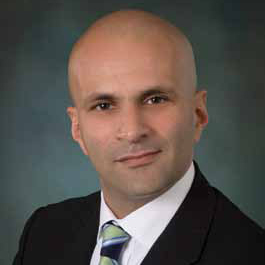An Interview with Rustom Desai, MBA ’95 Managing Director – Corning India
Observations on career management, doing business in India, and leadership

Observations on career management, doing business in India, and leadership

by Ashwin Gowda, MBA ‘15
Rustom visited the Johnson School in early February, 2015 and spent time with the Emerging Markets Institute. Highlights of his conversation are below.

Q: Could you elaborate on your journey from Johnson to CEO of Corning India?
RD: I wish it were a story of me being incredibly thoughtful while I was at business school but it isn’t. Corning was the first job offer I got among three. I decided to take it up because I was intrigued by the technology the company participated in. I signed up for it, and expected my time at Corning to last about 4 months and to later head back to India. However, 4 months turned into 20 years and it’s been an incredible journey. People are rather confused when they learn that I worked at the same company my whole life. My simple explanation is that the human psyche likes change, but it thrives on that change only when there’s a stable foundation. For me, that foundation has been Corning. And with that, I’ve lived in 4 countries, worked in countless more, had experience in everything from M&A to marketing, sales and general management.
I started off in the US, working in strategy, and then JV management and finally M&A. Then I went to India for a year selling optical fiber, China for 3 years in Sales Development and Strategy, and then to Taiwan for 3 years managing Global Product Line Management for Corning’s display business. That led me to India and into what became my current role as Managing Director. During my time in India, Corning has built and started up its first wholly-owned plant in India. It is a state-of-the-art optical fiber manufacturing facility. The team of leaders that built it, operate it, and ensure that we have customers to buy its products are incredible.
Q: What were the challenges you faced with regards to fitting into different roles and across different countries?
RD: Challenges usually end up being learnings over time. One of the massive learnings for me was to rely heavily on behavioral models and even stereotypes for first 60 days of a new assignment. Reason for that is that while no individual fits perfectly into his stereotype in any given function or geography, it helps you set the context for 50-70% of what’s going to hit you when you show up. Once you have navigated that first 60 days, you can start working off of experience. But you got to allow yourself that space to work off assumptions for a bit, until you have a personal view point.
Secondly, never underestimate how much politics impacts global business. Governmental politics drives education, education drives culture and culture drives how people see each other in the business world. So understand the political context of the world you are entering, in order to understand how people are going to perceive you during those formative first days in a new assignment.
Q: How were you able to succeed in new roles?
RD: Corning does a really good job of readying leaders up for new assignment. If I had been asked to make all these moves in a small enterprise or as an entrepreneur, the story could well have been much different. At Corning, the expatriation process is fantastic and involves a lot of training and pre-learning. One of the trainings was around how cultural perspectives change from one country to another. Fons Trompenaars is one of the great behavioral scientists I was introduced to in these sessions. People looking to embark on a career in international business ought to spend the time researching.
Q: We regularly hear that doing business in China is hard and there are a lot of stories of large global companies struggling in China. What does your experience say?
RD: It is not difficult to do business in China at all. In fact China rolls out a red carpet for foreign investors. A conversation could be something like – “Here are four different locations for your project, and three different ways to make your project financially remunerative. We can get the people to work ready for you on day-1, and we can construct the building for you. Here are three plans for the building, here are the roads and here’s the water. Do you want to meet next Tuesday?” Ease of doing business in China is far ahead of other emerging markets. The challenge in China is managing your IP and dealing with a government that is also your supplier, your customer and your competitor.
Q: How were you able to compete on price in China?
RD: When I lived in China 10 years ago, Chinese customers were willing to buy products at a premium, if they saw that the value existed. In my experience, Chinese customers are far more inclined to be value buyers than say, Indian customers-for whom price is king.
Q: How was your transformation when you moved back to India?
RD: I quickly realized that there was market opportunity in India. However, there was a downside to the hype in India, while in China there was a plenty of upside. I spent the first couple of years moving from a raging optimist to pessimist. Ease of doing business is definitely a big issue in India. It’s improving, but not as fast as it can and should be.
Q: Are emission norms in India driving demand for catalytic converters?
RD: Currently emission norms are years behind developed countries and even China, which gets a lot of (negative) attention for its pollution problems. However, we understand that new regulations will hit in 2017-this we hope will help the country deal with its increasingly ominous environmental pollution problem. And yes, it will drive demand for more advanced catalytic converters and diesel particulate filters.
Q: What was your decision making process for the import versus make in India strategy?
RD: For a large manufacturing and highly capital-intensive company, hundreds of millions of dollars are needed to set up a plant and the plant needs to be running at full capacity. Strategically, we would want one big massive global plant catering to global demand. Unless required by market forces to do things differently, we tend to focus on this model. Our decision to build an optical fiber plant in India was driven by the market opportunity and the fact that importing product was not viable.
Also, what really drove action was that the project had a big proponent in our headquarters. The leaders in the region never felt like they were having to push to drive the decision.
Q: What were the challenges you faced while setting up the plant in India?
RD: Building our brand within the government, both at the central and state levels was the initial challenge. We had to make them understand that we were a responsible transparent technology company focused on growing its people. Before the first penny showed up we had to showcase what our values were.
The second biggest challenge was the approvals and permits process in India. It is slow, complicated and not built to support investment. The new Narender Modi government is focused on changing this, through his “Make in India” and “Ease of Doing Business” initiatives. Let’s wish him all the best, and hope that these initiatives will be the key to unlocking India’s potential.
Q: How did you go about deciding where to set up the plant?
RD: We visited 21 different development sites in 9 states. We had clearly articulated objectives up front. We short listed 2 states. The final choice was a function of which state offered the most in terms of investment incentives.
Q: Did you have to make any product modifications for the Indian market?
RD: No changes were made to the products in India at all. The Indian plant is part of a global supply chain, manufactures to our global standard, and provides products to global markets, including the US. Pricing is a challenge in India, but we have been able to demonstrate differential value.
Q: How has the Indian plant performed since operations began?
RD: Initially, I felt that we would struggle with talent and retention. One of my biggest learnings was that available talent is really raw but is imminently trainable. We invested over 300,000 hours in training, and today the Pune plant outperforms many of our other plants on critical performance metrics. We built a team that has a strong culture that is aligned with our values. Output sets one record after the other. So all in, it’s been a phenomenal experience, and has renewed my faith in Corning’s technology and India’s ability to manufacturing world-class product.
Q: How did the value system of the Indian organization evolve?
RD: Before we hired first person, we defined what our culture should look like. Starting from the interview process, we included culture fit screening. The first group of people hired was sent to the US for training. We really wanted them to understand the core of Corning. Those that went loved the experience but thought we were crazy. The upshot? These very people are the champions of Corning’s values in India.
As you would expect, we also had many US leaders on site during the plant build/start up. They left an indelible mark on the culture of this new plant. An example of one of our values “the Individual” at play. Our start up team decided that in support of the individual, we would ensure that safety came above everything else. They built safety into everything our teams did. Today, we are >3 million hours and counting at the site without a single serious injury.
Here’s the beauty of all of this – our values are turning into a retention tool. Our people identify with them, and live by them.
Q: How do you see the future for Corning India 10-15 years from now?
RD: Continued growth in optical connectivity, environmental products and life sciences. Perhaps finding a way to innovate in India – for India and for our global businesses.
Q: What would be your advice to someone looking to set up a business in India?
RD: Have the right leader who completely buys into your vision. Doesn’t have to be Indian, just needs to be very clear about what is and isn’t acceptable – because those boundary conditions will get tested every single day.
